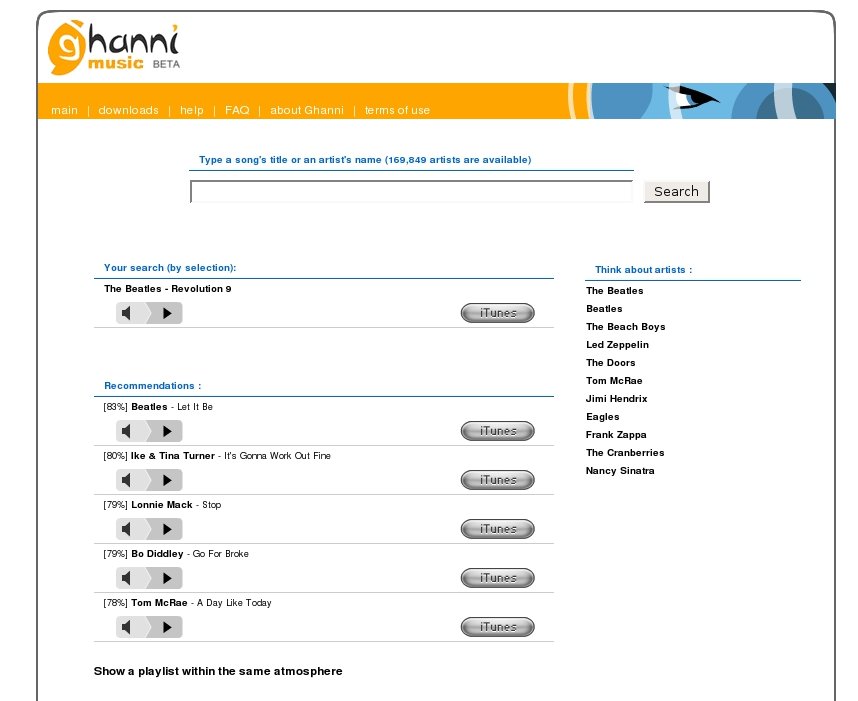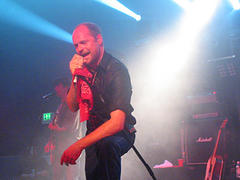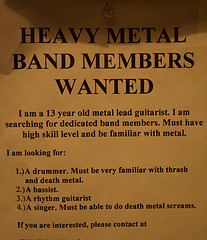Ghanni music is a
content-based music recommender. Type in the name of an artist or a
song, and you get recommendations based on music that sounds similar to
that song or artist. According to their FAQ, Ghanni uses "advanced pattern recognition and music signal analysis
techniques to estimate the similarities between your query and the
songs in our database. The similarity is a function of the rhythm,
timbre, instrumentation, vocals, and the music surface information we
automatically extract from a song."
The web interface to
Ghanni, unlike the latest round of social music recommenders, is
focused totally on music recommendation. There are no friends,
playlists, charts, games, users profiles or any of the seemingly
standard features of a Music 2.0 site, just recommendations.

Ghanni actually gives you 3 types of recommendations:
- Song level recommendations - this is something that a content-based site like Ghanni can in theory, do better than a social system,
- Think about artists - these are similar artists
- Playlist within the same atmosphere
The Recommendations
So how are the Ghanni recommendations? I found them to be rather
curious. I've worked with enough content-based recommenders to
know what to expect. Content-based recommenders will often
recommend music by different artists, different genres and era.
Content-based recommenders will do things like put Eleanor Rigby
closer to a string quartet than to Helter Skelter. Since
unlike social recommenders, content-based recommenders don't care about
popularity, content-based recommendations will tend to include many more
unknown artists than a social recommender.
The curious thing
about Ghanni is that their recommendations seemed more like social
recommendations than content-based recommendations.
I
started with the song 'Hey Jude' by the Beatles. Recommendations
received were 'Surfer Girl' by the Beach Boys, 'Dear Prudence' by the
Beatles, 'Laughter in the Rain' by Neil Sedaka, 'Tangerine' by Led
Zeppelin, and 'Fight for your honor' by Chicago. All classic rock
from the same era by very popular artists.
Next up, I tried a
song by 'Clap your hands say yeah' called 'Is this Love?'. I
received recommendations for songs by Razorlight, Catatonia, Rilo Kiley,
Stellstarr, and Bloc Party. All indie artists that have been
popular in the last 5 years or so.
Final test - 'Revolution #9'
by the Beatles. This song is so unlike any other song by the
Beatles, or for that matter any other pop song released during the 60s
or 70s. I'd expect recommendations for songs by artists such as Karlheinz Stockhausen and John Cage. Instead, Ghanni gives me more Beatles, Ike and Tina Turner, Bo Diddley, and Tom McRae. Not a single example of Music Concrete.
When I ask for a playlist within the same atmosphere, it looks like
playlist from the latest classic rock radio station: Beatles, Led
Zeppelin, Cream, Eagles, Doors, Ike and Tina.
Update: Oscar points out that if you ask for recommendations related to a French song,
all of the recommendations are French songs. Although very
desirable, this type of recommendation is far beyond the
state-of-the-art for content-based recommendations.
So what is
going on here? These don't seemed to be content-based recommendations
at all! Are they trying to pull the wool over our eyes? My guess
is that the scientists at Ghanni decided to use all data that was
available to them to build their similarity models. So in addition to
their content-based features related to timbre, pitch and tempo, they
are including features that are typically found in a song's metadata.
This include the year of release and the genre of the song.
This is a perfectly reasonable thing to do, any machine learning
scientist will tell you to use all of the data that you can.
However, it appears that these features derived from the metadata are
overwhelming the content based features. The resulting
recommendations lack the 'aha' factor that come with content-based
recommenders. There are no surprise linkages across genres. Just
rather pedestrian recommendations that you could easily get from the All
Music guide.
Ghanni seems to have some smart people
on their team, so we can expect them to improve their recommendations.
But for right now, the recommendations don't seem to be any better
than what you could get from the many other music recommenders that are
out there. Thanks yet again for the tip, Oscar!





